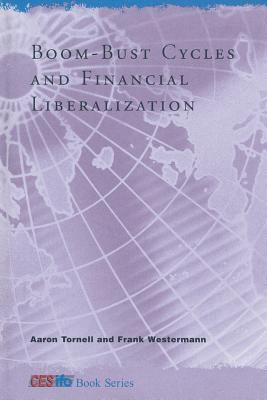
- We will send in 10–14 business days.
- Author: Aaron Tornell
- Publisher: MIT Press
- ISBN-10: 0262526247
- ISBN-13: 9780262526241
- Format: 15.2 x 22.9 x 1.2 cm, softcover
- Language: English
- SAVE -10% with code: EXTRA
Reviews
Description
Analysis and evidence of how the factors that give rise to boom-bust cycles in fast-growing developing economies also enhance long-run growth.
The volatility that has hit many middle-income countries (MICs) after liberalizing their financial markets has prompted critics to call for new policies to stabilize these boom-bust cycles. But, as Aaron Tornell and Frank Westermann point out in this book, over the last two decades most of the developing countries that have experienced lending booms and busts have also exhibited the fastest growth among MICs. Countries with more stable credit growth, by contrast, have exhibited, on average, lower growth rates. Factors that contribute to financial fragility thus appear, paradoxically, to be a source of long-run growth as well. Tornell and Westermann analyze boom-bust cycles in the developing world and discuss how these cycles are generated by credit market imperfections. They explain why the financial liberalization that allows countries to overcome imperfections impeding rapid growth also generates the financial fragility that leads to greater volatility and occasional crises. The conceptual framework they present illustrates this linkage and allows Tornell and Westermann to address normative questions regarding liberalization policies.The authors also characterize key macroeconomic regularities observed across MICs, showing that credit markets play a key role not only in boom-bust episodes but in the strong credit channel observed during tranquil times. A theoretical framework is then presented that explains how credit market imperfections can account for these empirical patterns. Finally, Tornell and Westermann provide microeconomic evidence on the credit market imperfections that drive the results of the theoretical framework, finding that asymmetries between tradables and nontradables are key to understanding the patterns in MIC data.
EXTRA 10 % discount with code: EXTRA
The promotion ends in 18d.00:22:25
The discount code is valid when purchasing from 10 €. Discounts do not stack.
- Author: Aaron Tornell
- Publisher: MIT Press
- ISBN-10: 0262526247
- ISBN-13: 9780262526241
- Format: 15.2 x 22.9 x 1.2 cm, softcover
- Language: English English
Analysis and evidence of how the factors that give rise to boom-bust cycles in fast-growing developing economies also enhance long-run growth.
The volatility that has hit many middle-income countries (MICs) after liberalizing their financial markets has prompted critics to call for new policies to stabilize these boom-bust cycles. But, as Aaron Tornell and Frank Westermann point out in this book, over the last two decades most of the developing countries that have experienced lending booms and busts have also exhibited the fastest growth among MICs. Countries with more stable credit growth, by contrast, have exhibited, on average, lower growth rates. Factors that contribute to financial fragility thus appear, paradoxically, to be a source of long-run growth as well. Tornell and Westermann analyze boom-bust cycles in the developing world and discuss how these cycles are generated by credit market imperfections. They explain why the financial liberalization that allows countries to overcome imperfections impeding rapid growth also generates the financial fragility that leads to greater volatility and occasional crises. The conceptual framework they present illustrates this linkage and allows Tornell and Westermann to address normative questions regarding liberalization policies.The authors also characterize key macroeconomic regularities observed across MICs, showing that credit markets play a key role not only in boom-bust episodes but in the strong credit channel observed during tranquil times. A theoretical framework is then presented that explains how credit market imperfections can account for these empirical patterns. Finally, Tornell and Westermann provide microeconomic evidence on the credit market imperfections that drive the results of the theoretical framework, finding that asymmetries between tradables and nontradables are key to understanding the patterns in MIC data.


Reviews